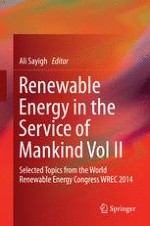2016 | OriginalPaper | Chapter
51. Better Than Optimum: Integrated. The Integration of Renewable Energy in Architecture as an Optimization Factor
Authors : H. Coch, C. Pardal, A. Pagès-Ramon, A. Isalgué, I. Crespo
Published in: Renewable Energy in the Service of Mankind Vol II
Publisher: Springer International Publishing
Activate our intelligent search to find suitable subject content or patents.
Select sections of text to find matching patents with Artificial Intelligence. powered by
Select sections of text to find additional relevant content using AI-assisted search. powered by
